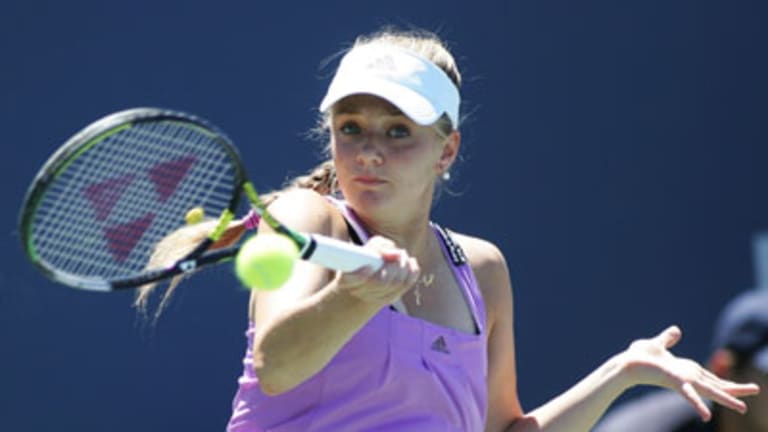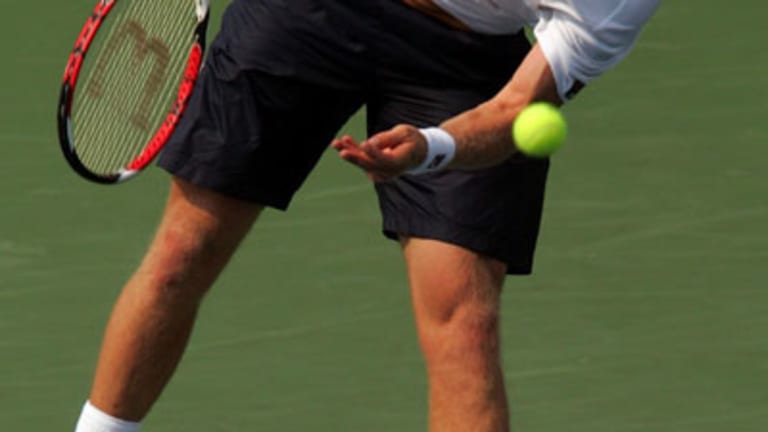The U.S. Open Series takes its time getting out of bed. Its first two weeks—L.A. and Indianapolis/Stanford—constitute a yawn and a stretch. They seem less like warm-ups for the Big Show in Flushing than they do tune-ups for the Open Series itself. Even the TV schedule in the States was still a little hazy. If the Series has had two overriding goals, it’s been to make tennis “appointment television” on Sundays, and to showcase the dual-gender nature of the sport. Yesterday, though, you had to choose between the men and women: ESPN2’s live coverage of Stanford began at 3:00; NBC’s tape of the Indy final started at 4:00.
Still, the Series inched toward August, when significance returns in the form of Roger Federer, Rafael Nadal, and maybe even a Williams sister or Justine Henin. Who made the most of their absences on this early, sleepy weekend?
Anna Chakvetadze We’ve seen Ana Ivanovic break through this spring, and Nicole Vaidisova and Jelena Jankovic continue their strong play. Now, with those three joining the rest of the top tier on the sidelines, we’ve gotten a better look at the fourth of the WTA’s rising youngsters. For anyone who misses Martina Hingis or despairs for her future, Chakvetadze, 20, may be your girl. Yesterday the Russian was impressively Hingis-like, and impressively tough-minded, in her win over Sania Mirza for the title in Stanford, her second in as many weeks.
At 5-foot-7, 128 pounds (in her sneakers), Chakvetadze is never going to win with explosiveness, but she makes up for it with court sense and a controlled demeanor. You can see it in her face as she serenely rocks back and forth while waiting to return serve. That control extends to her ground strokes, which she rarely aims close to the lines. Instead, she changes directions with the ball relentlessly off both wings, and even with her return of serve—as with Hingis, you can’t really teach that kind of thing.
Like many women, especially Russian women, Chakvetadze’s backhand is her stronger stroke. She runs around to hit it on returns and she can create winners with it from a counterpunching position. The same is true for her forehand—she cracked a couple angled winners from that side yesterday that seemed utterly improbable for someone her size—but she’s a little more erractic with it. She worked with Robert Lansdorp earlier this year, and that means her strokes are bound to get a little flatter. Is this a good thing? Lansdorp has coached his share of champions, but I’m not sure flatter will be the way to go for a counter-puncher with good hands like Chakvetadze. At her size, she needs to move the ball around rather than try to power winners from behind the baseline.
But if Chakvetadze has an Achilles’ heel, it is, not surprisingly, her serve. Even while winning in Stanford, she struggled with double-faults, going for too many low-percentage flat first serves and rushing her second deliveries. What was impressive was how Chakvetadze, serving for the first set at 5-3, made her troubles disappear when it counted. Just when she looked ready for a double-fault meltdown, she closed out the set with her best serving game of the match. She looks unassuming, but Chakvetadze is deceptively steely, and it's helped her to a 6-0 record in finals. She moves to No. 6 in the world this week, just below the hard core of top women players. The trees get taller from here; it will be interesting to see her put her modestly tough game up against them as the summer progesses.
Dmitry Tursunov He looked good, didn’t he? I was particularly surprised by his focus and economy in the Indy final. He knew he could beat Frank Dancevic by taking over the center of the court, and that’s just what he did. There were very few crazy attempts at winners from out of position, no mental walkabouts, and only a slight nervous hiccup trying to serve out the first set. Time after time, Tursunov was able to move Dancevic backward and move himself in front of the center hash mark; he’s a tough guy to beat from that position because he can put balls away from both sides and to either corner. He was in such control that he faced no break points the entire match.

